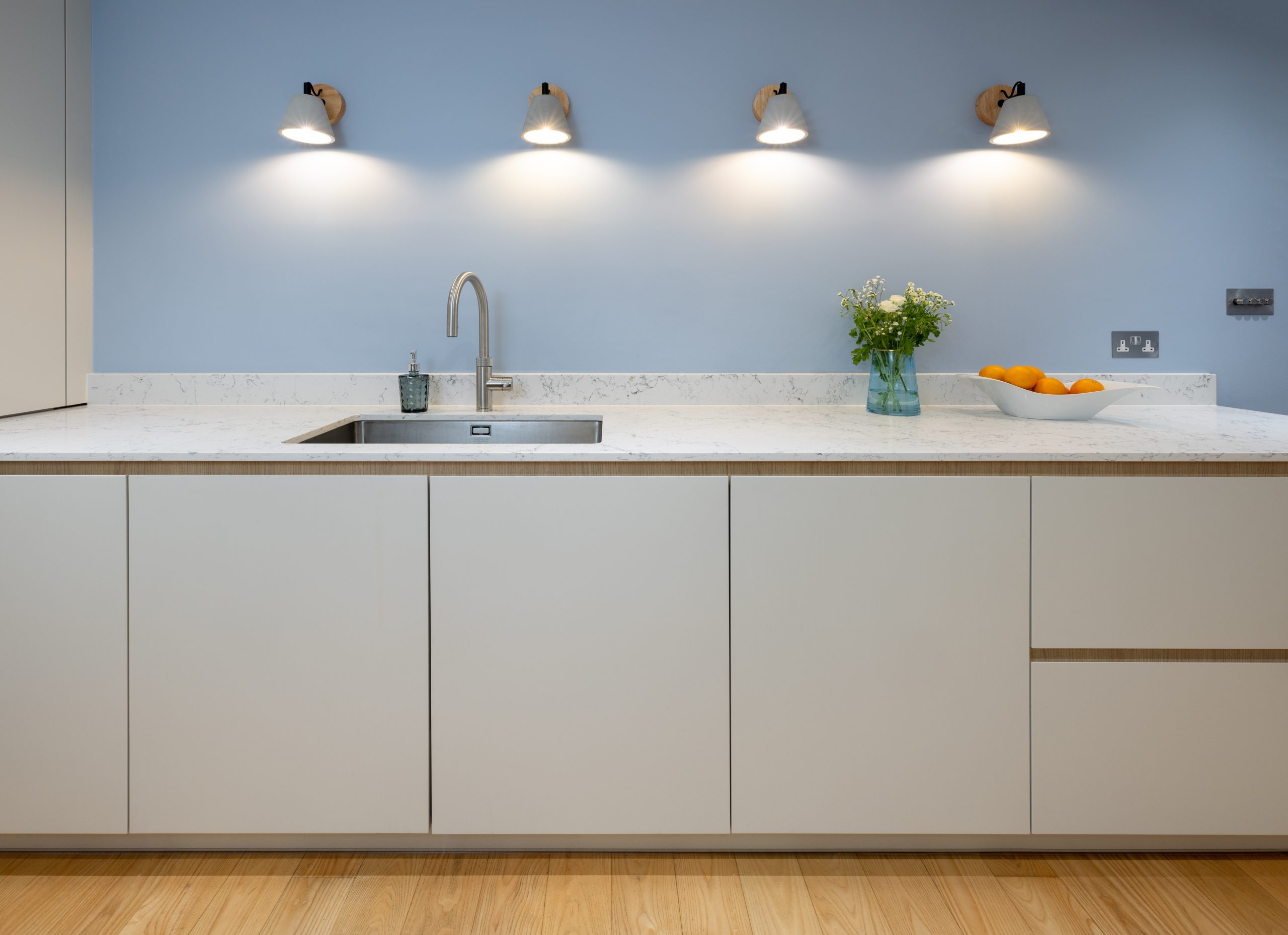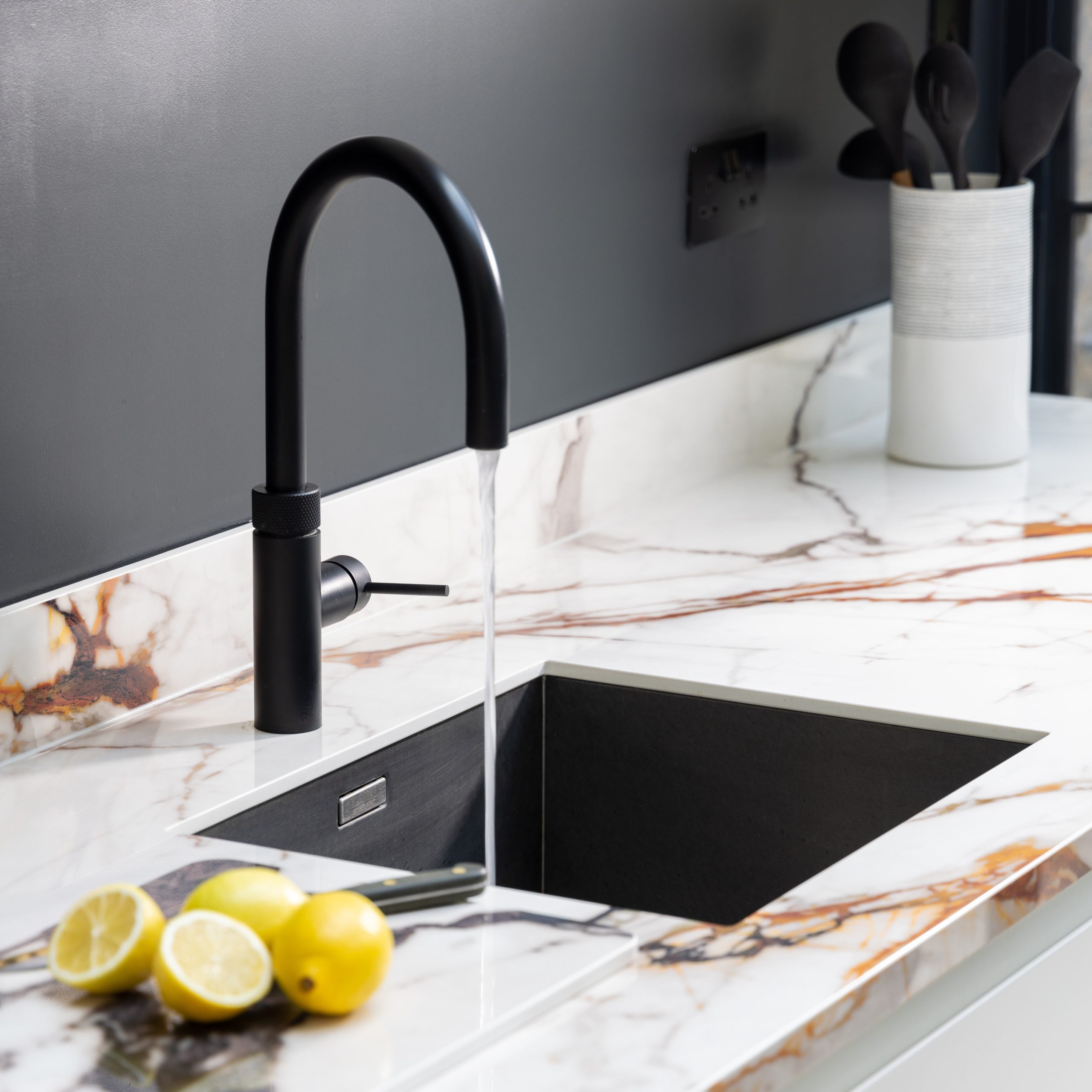Lighting quietly shapes every experience in your space. Think about it; have you ever walked into a room that felt cold, only for a warm lamp to be turned on and transform the atmosphere? Lighting IS the experience of a space.
And yet, it’s often an afterthought.
You might spend months choosing cabinetry finishes or debating appliances, but what about the light that brings everything to life?
Lighting is one of the most overlooked aspects of kitchen design. Often rushed. Often left until the final stages. But by then, it’s often too late. And the impact is felt not just in the design, but in your daily life.
This post explores why lighting deserves a central role in your kitchen journey – from atmosphere to functionality to emotional well-being.
 A High-End Kitchen With Illuminating Details – By Amberth
A High-End Kitchen With Illuminating Details – By Amberth
Why Kitchen Lighting Should Start Early
Lighting is emotional architecture. When you integrate lighting design from the start, you gain more than visibility. You gain mood. Rhythm. Possibility.
- Functionality that fits your life: Good task lighting doesn’t call attention to itself, but you feel it when it’s missing. No shadows on the chopping board. No squinting at the recipe. No harsh glare as you tidy up. It supports your routine in quiet, practical ways. The kind of ease you only notice once you’ve had it.
- Atmosphere on your terms: Think of your kitchen’s atmosphere as fluid. It should move with you – rise to meet your energy, soften when the day winds down. Guide your eye when the chef’s at work. Hold space when you’re just passing through. One room. Many moods. That’s what layered lighting does. It adapts to the rhythm of your life. That’s what layered lighting adapts to the rhythm of your life.
- Design that glows, not glares: When lighting is left too late, it often ends up… flat. Now, you’re stuck with uniform ceiling spots that flatten the space. If you integrate early, lighting enhances material textures, colour palettes, and spatial flow.
If you’re starting a renovation, it helps to think about lighting when planning your kitchen zones. That way, each activity gets the light it deserves.
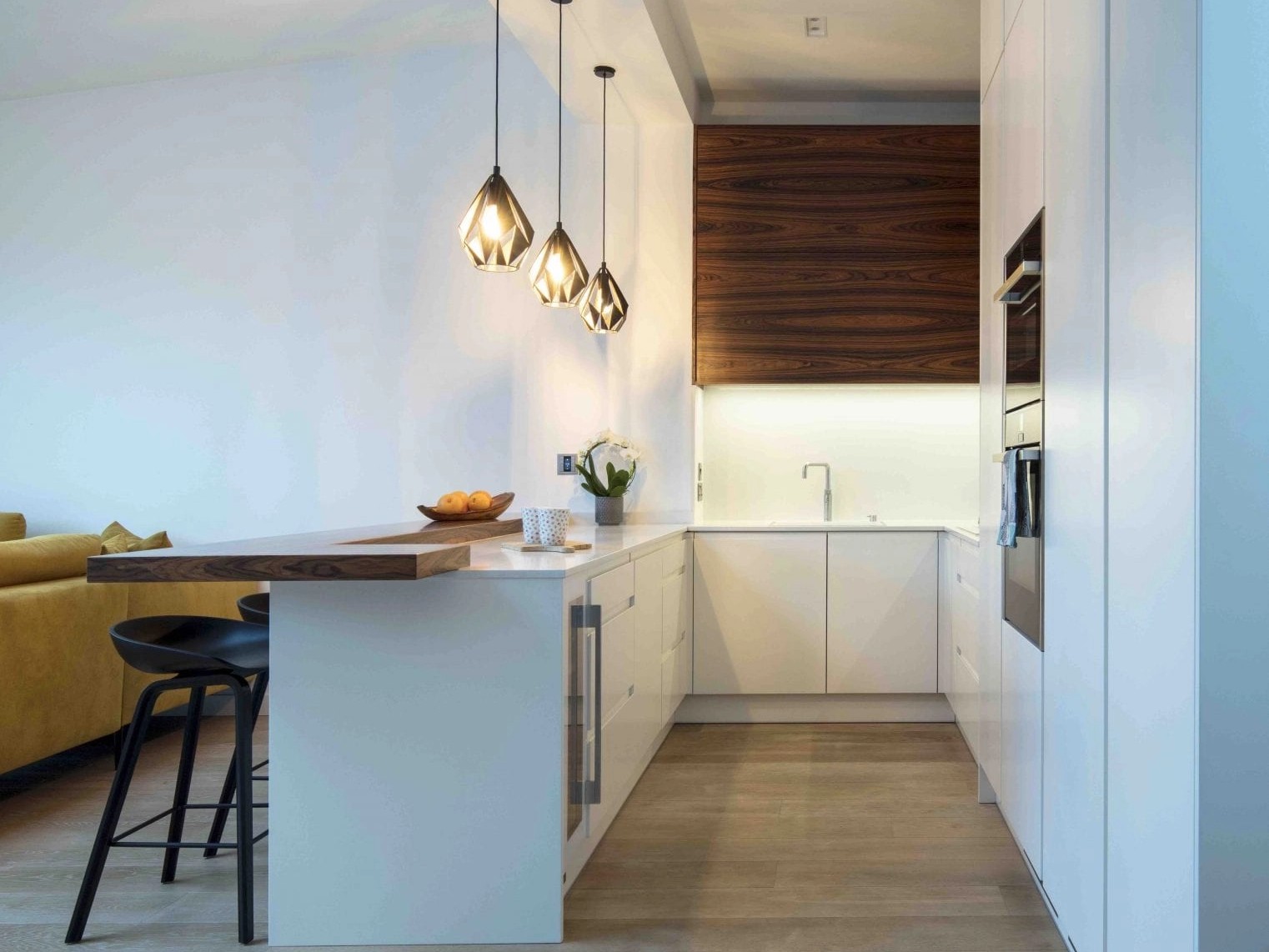 A Kitchen & Living Fusion – By Amberth
A Kitchen & Living Fusion – By Amberth
The Layers That Make It Work
Think of your kitchen lighting like planning a beautiful meal. It needs balance, depth, and timing. Enter the respectable practice of layered lighting.
Ambient Lighting
This is your base layer. It gives general illumination and sets the tone. But it shouldn’t be harsh or clinical (a common mistake).
Soft overhead lighting or architectural lighting built into ceilings should offer a gentle, diffused wash. Dimmable controls give you freedom to shift from practical to peaceful in seconds, so you don’t need to choose one or the other.
Task Lighting
This is where functionality meets safety and clarity.
It lives under cabinets, over worktops, or built into shelving. Done well, it becomes invisible. But you’ll notice how much smoother your day feels, and how much easier your kitchen tasks become.
Accent Lighting
The emotional layer. Accent lighting creates focal points and brings personality.
Whether it’s a sculptural pendant over your island, LEDs that skim textured splashbacks, or gentle plinth lighting near the floor, it’s these touches that make a kitchen feel like yours.
Explore how lighting pairs beautifully with thoughtful fixtures and finishes to complete your design.
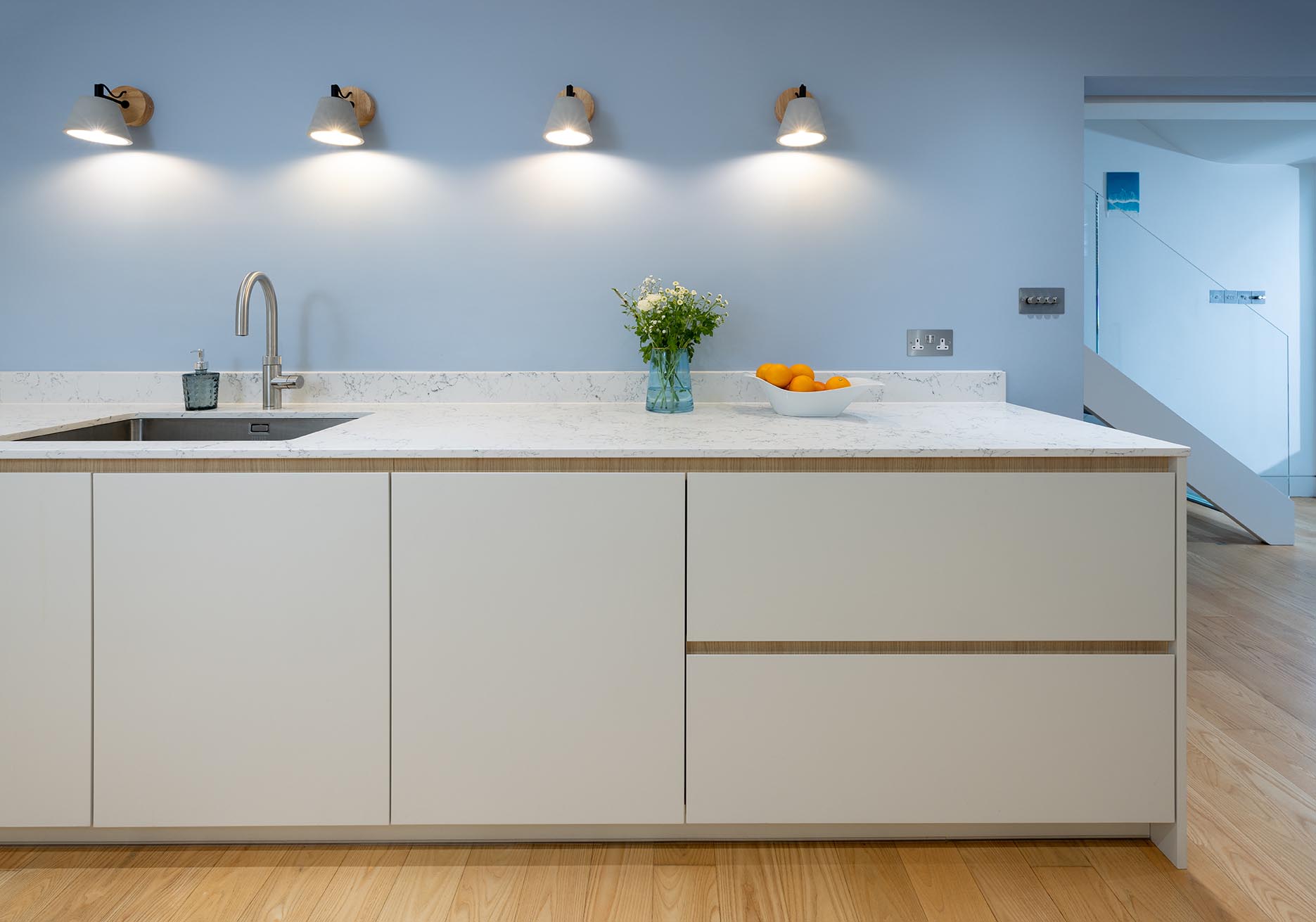
Light That Lives With You
What does “good lighting” feel like?
- It greets you in the morning with gentle tones that don’t jar you awake.
- It holds space for stillness. Like a warm pool of light over a book with tea.
- It says “welcome home” before anyone else does.
A well-lit kitchen supports how you live, not just how you cook. It holds emotional value as much as aesthetic appeal. And when it’s tuned to your rhythm, every moment there feels just a little more held. More you.
That’s the kind of detail we bring into every bespoke kitchen we design.
Common Mistakes (and How to Avoid Them)
Leaving lighting until the end isn’t the only pitfall (but we convinced you it’s a big NO, right?). Here are others worth sidestepping:
- Relying on ceiling spots alone: Uniformity flattens depth. Mix in vertical and directional lighting for contrast.
- Overlooking natural light: Consider how the sun moves through your space. Design lighting to complement it and fill in the shadows.
- Choosing fixtures before layout: Let function lead. Where you cook, prep, and relax – you’ll need light that serves the task.
- Ignoring emotional tone: Cool white light might be bright, but does it feel good at 6am or 9pm?
Every decision here changes the way you experience the space.
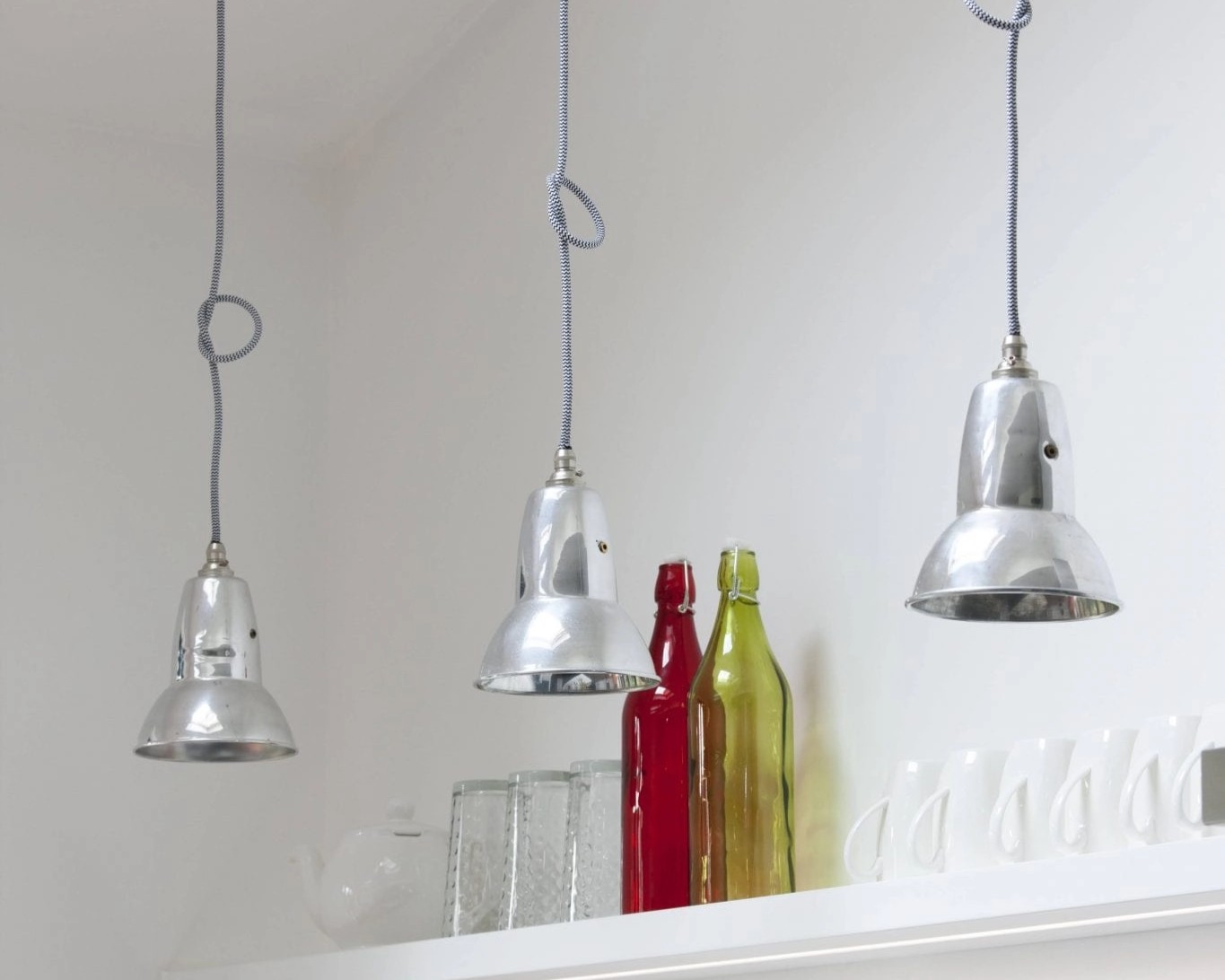 A Kitchen Balanced in Function and Form – By Amberth
A Kitchen Balanced in Function and Form – By Amberth
Final Thought: Light the Life You Want
A beautifully lit kitchen goes beyond simple visibility and speaks to the vitality of a home. It’s about honouring how you use your space, how you want to feel in it.
Start with lighting – not as an afterthought, but as a cornerstone. Let it guide mood, enhance materials, and support daily rituals. Because when the lighting feels right, everything else shines. Literally.
If you’re imagining a kitchen that feels as good as it looks, don’t leave the lighting until last. Book a consultation with Amberth and explore lighting design that’s crafted around your lifestyle, your routines, and your emotional needs.
.
.
.
.
FAQs: Kitchen Lighting Design
When should lighting be planned in a kitchen renovation?
Ideally, at the very beginning. Before layout decisions are finalised. This ensures lighting supports spatial flow and function.
How can I make my kitchen lighting more flexible?
Layered lighting and dimmable switches are key. You can create multiple moods with the same space and adapt to time of day or activity.
What colour temperature is best for kitchens?
Warm white (2700–3000K) suits most home kitchens. It feels cosy yet bright enough for tasks. Avoid overly cool tones unless you want a clinical feel.
Can lighting help make a small kitchen feel bigger?
Yes. Clever use of vertical light, reflective surfaces, and under-cabinet illumination can expand the sense of space.
